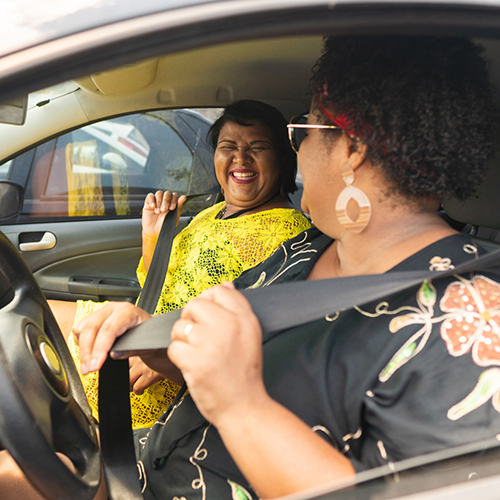A Complete Guide to Recognizing – and Avoiding – Distracted Driving

As companies begin to experiment with autonomous technology, we can start to imagine a day when our cars will be able to drive themselves. Until then, we need to stay just as alert as ever while behind the wheel. Nowadays, hundreds of apps, advertisements and assignments grasp for our attention at every minute of the day.
The National Highway Traffic Safety Administration (NHTSA) reports that in 2016, 3,450 people were killed and 391,000 people were injured by distracted driving. Distracted driving is any behavior that takes your mind off the road or your hands off the wheel. This includes:
- Talking or texting on a cell phone
- Eating and drinking
- Talking to passengers
- Personal grooming
- Reading, including maps and billboards
- Programming a navigation system
- Watching a video
- Adjusting your music, podcast, or audiobook while driving
- Searching for objects in the vehicle
- Looking at things off the roadway
Engaging in any of these behaviors can result in a ticket or worse. In fact, in New Jersey, using your phone while driving will result in fines: $200–$400 for the first offense, $400-$600 for the second offense, and $600-$800 for the third offense, as well as 3 motor vehicle points and a possible 90-day license suspension. In Pennsylvania, the penalty for texting and driving is a $50 fine (and points on your motor vehicle record if you are a commercial driver).
No text, call or game is worth a fine or — worse — your life.
So how can we resist the temptation presented by all the things that seek our attention?
- Vow never to talk or text while driving — even at a traffic light or stop sign. Your car might have hands-free features, but the National Safety Council (NSC) reports that using these features while driving can be risky. The NHTSA reports that 481,000 drivers used handheld devices while on the road in 2016. By putting down the phone, you will be one fewer person on the road putting others in danger.
- Set a good example. Children and teenagers will do as you do, not as you say. If you use your cell phone while driving, your kids are more likely to pick up on the behavior when it is their turn behind the wheel. Ask your kids, and any other passengers in your car, to respect your focus: they can take control of navigation and refrain from any distracting behaviors while you are driving. Demonstrate that distracted driving is unacceptable for all drivers, and if they are caught driving distracted, there will be consequences.
- Teach teens to set a good example, too. Teenagers can be some of the worst offenders when it comes to distracted driving. The NHTSA reports (via NSC) that 20% of drivers aged 18–20 said that using their phone does not negatively affect their driving, and 30% of drivers aged 21–34 said that using their phone has no impact. Register yourself and your teenager for a safe driving course, like NJM's Share the Keys program, and learn together how to drive more safely.
- Speak up! When you're in the car with a distracted driver, say something. People are more likely to listen to a loved one, especially if they care about your opinion of them. Your comment could be a wake-up call for them to stop distracted driving. Another way to speak up is to get involved in programs like New Jersey's People Against Distracted Driving (PADD) or your local Students Against Destructive Decisions (SADD).
- Ignore it. Reject distractions off the road, like flashing billboards, stopped cars, or other roadside distractions. Keep your eyes and mind on your own driving.
- Mute it. If you find it too hard to resist the temptation, make a habit of putting your phone on mute — or turning off the phone's data connection altogether — before getting into the car. Further than that, you can download a mobile app like Thumb Tied, which disables incoming texts, calls, emails and other notifications while your car is in motion. Also remember to mute notifications on any wearables you might have connected to your phone. If you really need to send a text or make a call, safely pull over to the side of the road before doing so.
- Keep your pet in the back. Pets can easily distract drivers when in the front seat of the car. Attempting to restrain your pet yourself will take your concentration off the road for a dangerous amount of time. For best results, keep your pet in a carrier or harness in the back seat.
- Prepare for your drive beforehand. Make sure you are well-rested and take breaks from long drives. Wake up early enough that you can groom before getting in the car. Program your navigation before you leave the driveway. Set your playlist early so you won't be tempted to change the song while driving. Warn any friends you were just texting that you're about to drive so they shouldn't expect a response from you for a while.
There are many ways to become a distracted driver, but that doesn't mean you have to fall victim to one. It's important to remember that as long as you're behind the wheel of the car, your attention needs to be on the road. Lead the charge towards distraction-free roads today by taking your focus off the phone and putting it back on the road.



